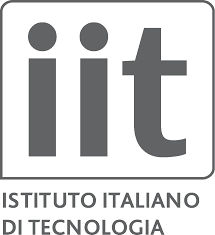预约演示
更新于:2025-07-15
Carmofur
卡莫氟
更新于:2025-07-15
概要
基本信息
结构/序列
分子式C11H16FN3O3 |
InChIKeyAOCCBINRVIKJHY-UHFFFAOYSA-N |
CAS号61422-45-5 |
关联
100 项与 卡莫氟 相关的临床结果
登录后查看更多信息
100 项与 卡莫氟 相关的转化医学
登录后查看更多信息
100 项与 卡莫氟 相关的专利(医药)
登录后查看更多信息
547
项与 卡莫氟 相关的文献(医药)2025-05-01·Biomedical Materials
Improved apoptosis and mitochondrial dysfunction: the potential of carmofur-platinum nanoparticles
Article
作者: Kariper, İshak Afşin ; Korkut, Işık Neslişah ; Erdemir-Cilasun, Gökçe ; Özerkan, Dilşad ; Danışman-Kalındemirtaş, Ferdane ; Sert, Esra
Abstract:
Despite their impact on cancer therapy, limitations such as systemic toxicity and drug resistance are encountered with platinum-based drugs. This study explores the potential of combining PtIV-based NP with carmofur (Car) to address these issues. In this study, platinum nanoparticles (PtNPs) and Car-loaded PtNP (Car@PtNP) were synthesized and their cytotoxic and apoptotic effects on colorectal and breast cancer cells were evaluated. Following characterization of the synthesized NPs by dynamic light scattering, UV–VIS spectroscopy, FTIR, and STEM, it was found that the average size of PtNPs was 55.42 nm and the size increased to approximately 186.06 nm upon synthesis of Car@PtNP. MTT assays demonstrated that Car@PtNP exhibited higher levels of cellular toxicity than carmofur alone. While it significantly decreased cell viability in both colon and breast cancer cells, its toxicity to HUVEC cells was minimal. Treatment of MCF-7 and HCT116 cells with 50 µg ml−1 of free Car resulted in cell viabilities of 65.2% and 76.93%, respectively, whereas the viability of cells treated with Car@PtNP decreased to 49.60% and 55.47%. Flow cytometric analysis confirmed that apoptosis was increased in healthy HCT116 cells treated with Car@PtNP, with a marked increase in both early and late apoptotic cell populations. Furthermore, these results were confirmed by Hoescht and Rhodamin123 immunofluorescence staining, and significant mitochondrial dysfunction and apoptotic morphological changes were observed in treated cells. The findings underscore the promise of Car@PtNP as a novel chemotherapeutic approach, integrating the benefits of PtIV complexes and Car to enhance antitumor efficacy while mitigating the drawbacks of conventional platinum-based therapies.
2025-03-01·ChemistrySelect
Recent Expansions in the Potential of Uracil Derivatives as Chemotherapeutic, Antimicrobial, and Antiviral Agents: A Review
作者: Kaur, Kamaljit ; Sharma, Sahil ; Roychowdhury, Tanaya ; Sanduja, Mohit ; Kaur, Ramandeep ; Kinarivala, Nihar
Abstract:
Uracil is a privileged scaffold in medicinal chemistry, playing a crucial role in the development of therapeutic agents. Clinically used uracil analogs, such as 5‐fluorouracil, tegafur, carmofur, and floxuridine, have shown significant anticancer potential. However, their clinical applications are limited by poor selectivity, central nervous system toxicity, and gastrointestinal side effects. To overcome these challenges, structural modifications and hybridization with other pharmacophores have been explored, enhancing therapeutic efficacy and selectivity. This review highlights recent advancements (post‐2013) in the chemistry and biological activity of uracil derivatives, categorizing them into 5‐halo‐uracils, substituted uracils, uracil nucleosides, uracil‐based hybrids, organometallic derivatives, thiouracils, prodrugs, and fused uracils. Their anticancer activity is primarily linked to DNA biosynthesis inhibition and cell cycle arrest, while their antiviral and antimicrobial effects arise from disrupting key steps in viral replication and bacterial growth. Promising results have been observed against HIV, HCMV, herpes viruses, Staphylococcus aureus, Escherichia coli, Bacillus cereus, Pseudomonas aeruginosa, Trypanosoma, and Leishmania species. This review aims to inspire medicinal chemists to develop highly selective, less toxic, and more potent uracil‐based chemotherapeutic, antiviral, and antimicrobial agents for future clinical applications.
2024-11-01·BIOCHEMICAL AND BIOPHYSICAL RESEARCH COMMUNICATIONS
Structural basis of main proteases of MERS-CoV bound to antineoplastic drug carmofur
Article
作者: Zhou, Xuelan ; Zeng, Pei ; Li, Jian ; Li, Wenwen ; Guo, Li ; Zhang, Jin
Recurrent epidemics of coronaviruses have posed significant threats to human life and health. The mortality rate of patients infected with the Middle East Respiratory Syndrome Coronavirus (MERS-CoV) is 35 %. The main protease (Mpro) plays a crucial role in the MERS-CoV life cycle, and Mpro exhibited a high degree of conservation among different coronaviruses. Therefore inhibition of Mpro has become an effective strategy for the development of broad-spectrum anti-coronaviral drugs. The inhibition of SARS-CoV-2 Mpro by the anti-tumor drug carmofur has been revealed, but structural studies of carmofur in complex with Mpro from other types of coronavirus have not been reported. Hence, we revealed the structure of the MERS-CoV Mpro-carmofur complex, analysed the structural basis for the binding of carmofur to MERS-CoV Mpro in detail, and compared the binding patterns of carmofur to Mpros of two different coronaviruses, MERS-CoV and SARS-CoV-2. Considering the importance of Mpros for coronavirus therapy, structural understanding of Mpro inhibition by carmofur could contribute to the design and development of novel antiviral drugs with safe and broad-spectrum efficacy.
1
项与 卡莫氟 相关的新闻(医药)2025-04-22
·摩熵医药
注:本文不构成任何投资意见和建议,以官方/公司公告为准;本文仅作医疗健康相关药物介绍,非治疗方案推荐(若涉及),不代表平台立场。任何文章转载需要得到授权。近日,人福医药集团旗下武汉人福创新药物研发中心申报的1类新药HWS116注射液获批临床,拟用于治疗晚期实体瘤。据透露,其在HWS116项目中的研发投入现约为3800万元。此次临床试验申请获批,将有力推动其在肿瘤领域创新产品管线的进一步拓展。HWS116是一款靶向FGFR2b的人源化单克隆抗体,通过阻断成纤维细胞生长因子受体介导的信号通路抑制肿瘤生长,并通过其Fc介导的抗体依赖性细胞介导的细胞毒性作用(ADCC)和吞噬作用(ADCP)杀伤肿瘤细胞。FGFR2b的过表达与胃癌、乳腺癌、肝内胆管癌等高侵袭性肿瘤密切相关,约30%的HER2阴性晚期胃癌患者中存在FGFR2b过表达。开发靶向FGFR2b的疗法,有助于实现FGFR2b过表达癌症患者的精准治疗。人福医药集团医药研究院已完成HWS116注射液的药学、药理毒理研究、临床设计及注册申报等工作,并于2025年2月向国家药品监督管理局药品审评中心提交临床试验申请并获得受理。HWS116注射液审评时间轴截图来源:摩熵医药中国药品审评数据库临床前数据显示,HWS116能显著抑制FGFR2b高表达的多种小鼠皮下移植瘤生长,抑瘤效果优于同靶点药物Bemarituzumab,毒理学研究表明本品安全性良好。摩熵医药数据显示,近年来中国医院全终端市场抗肿瘤药(化药+生物药)销售额均达千亿规模,2023年超过1200亿元,同比增长5.60%;2024年Q1~Q2以7.67%的增速增长至近650亿元。截图来源:摩熵医药全国医院销售(全终端)数据库在抗肿瘤药领域,人福医药拥有5个生产批文(在使用),涉及塞来昔布胶囊、卡莫氟、乙磺酸尼达尼布软胶囊、注射用盐酸尼莫司汀等4个品种。据不完全统计,目前人福医药有4款抗肿瘤1类新药在国内处于I期临床及以上阶段,涵盖乳腺肿瘤、肺癌、前列腺癌等适应症。人福医药抗肿瘤药领域生产批文信息截图来源:摩熵医药中国药品批文数据库近年来,人福医药坚持研发创新和国际化拓展,加快核心领域的创新药项目研发。摩熵医药数据库显示,今年以来,人福医药已有1类新药CXJM-66注射液、2类改良型新药RFUS-301注射剂获批临床,均为神经系统药物。CXJM-66注射液为宜昌人福自主研发的新分子实体,临床拟用于手术麻醉术后镇痛。RFUS-301注射剂是一款改良型术后镇痛药物,国内目前尚无同类型产品上市。自1997年上市以来,人福医药在国内麻醉、镇痛的神经系统用药领域一直盘踞在行业龙头的位置,且不断地深挖护城河。其芬太尼系列、氢吗啡酮等神经系统药物核心产品,市占率可谓一骑绝尘。2023年注射盐酸瑞芬太尼全国医院终端市场销售额超42亿元,人福医药核心子公司宜昌人福医药市场占比超过八成。截图来源:摩熵医药全国医院销售(全终端)数据库截至目前,人福医药及其子公司拥有649个药品生产批文(在使用),其中59个独家品规产品,158个品规产品被纳入国家基药目录,254个品种被纳入国家医保目录,同时还拥有230多个FDA批准的ANDA(简化新药申请)文号。END本文为原创文章,转载请留言获取授权近期热门资源获取数据透视:中药创新药、经典验方、改良型新药、同名同方的申报、获批、销售情况-2025042023H2-2024H1中国药品分析报告-2025042024年中国1类新药靶点白皮书-202503中国AI医疗健康企业创新发展百强榜单-202502解码护肤抗衰:消费偏好洞察与市场格局分析-2025022024年FDA批准上市的新药分析报告-2025012024年NMPA批准上市的新药分析报告-2025012024年医保谈判及市场分析报告-2025.012024年中国医疗健康投融资全景洞察报告-202501小分子化药白皮书(上)-2025012024医美注射材料市场发展分析报告-202412中国放射性药物产业白皮书-202410近期更多摩熵咨询热门报告,识别下方二维码领取联系我们,体验摩熵医药更多专业服务会议合作园区服务数据库咨询定制服务媒体合作点击上方图片,即可开启摩熵化学数据查询点击阅读原文,申请摩熵医药企业版免费试用!
申请上市抗体药物偶联物临床1期临床申请
100 项与 卡莫氟 相关的药物交易
登录后查看更多信息
研发状态
批准上市
10 条最早获批的记录, 后查看更多信息
登录
| 适应症 | 国家/地区 | 公司 | 日期 |
|---|---|---|---|
| 乳腺癌 | 中国 | 1997-01-01 | |
| 结直肠癌 | 中国 | 1997-01-01 | |
| 食管癌 | 中国 | 1997-01-01 | |
| 胃癌 | 中国 | 1997-01-01 |
未上市
10 条进展最快的记录, 后查看更多信息
登录
| 适应症 | 最高研发状态 | 国家/地区 | 公司 | 日期 |
|---|---|---|---|---|
| 肿瘤 | 临床前 | 意大利 | 2013-04-24 |
登录后查看更多信息
临床结果
临床结果
适应症
分期
评价
查看全部结果
| 研究 | 分期 | 人群特征 | 评价人数 | 分组 | 结果 | 评价 | 发布日期 |
|---|
No Data | |||||||
登录后查看更多信息
转化医学
使用我们的转化医学数据加速您的研究。
登录
或

药物交易
使用我们的药物交易数据加速您的研究。
登录
或

核心专利
使用我们的核心专利数据促进您的研究。
登录
或

临床分析
紧跟全球注册中心的最新临床试验。
登录
或

批准
利用最新的监管批准信息加速您的研究。
登录
或

特殊审评
只需点击几下即可了解关键药物信息。
登录
或

Eureka LS:
全新生物医药AI Agent 覆盖科研全链路,让突破性发现快人一步
立即开始免费试用!
智慧芽新药情报库是智慧芽专为生命科学人士构建的基于AI的创新药情报平台,助您全方位提升您的研发与决策效率。
立即开始数据试用!
智慧芽新药库数据也通过智慧芽数据服务平台,以API或者数据包形式对外开放,助您更加充分利用智慧芽新药情报信息。
生物序列数据库
生物药研发创新
免费使用
化学结构数据库
小分子化药研发创新
免费使用

